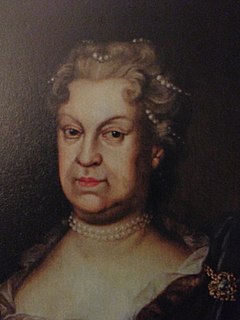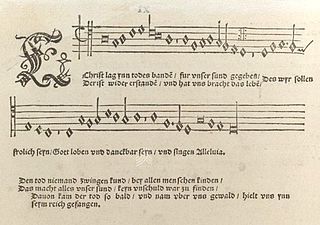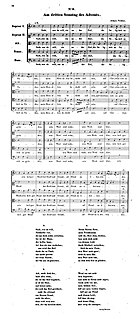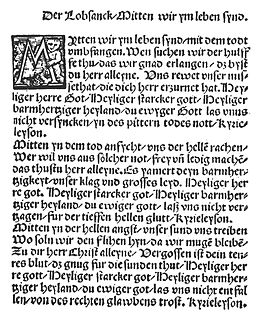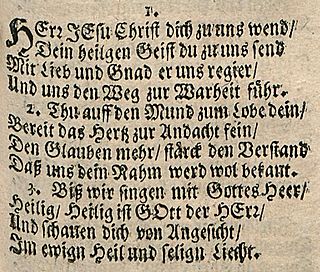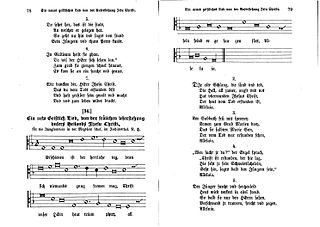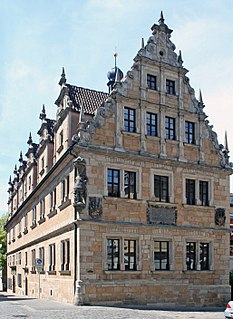Salmer 1997 (1997 Hymns) is an official supplement to the Church of Norway's 1985 hymnal that was published in 1997. [1] [2] [3] [4] The Church Council (Norwegian : Kirkerådet) was responsible for preparing it.

The Church of Norway is an evangelical Lutheran denomination of Protestant Christianity and by far the largest Christian church in Norway, with membership mandatory for everyone until the 19th century.
Norsk Salmebok, published in 1985, was the official hymnal of the Church of Norway from 1985 to 2013.
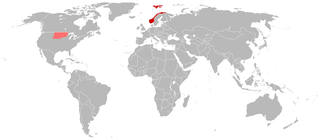
Norwegian is a North Germanic language spoken mainly in Norway, where it is the official language. Along with Swedish and Danish, Norwegian forms a dialect continuum of more or less mutually intelligible local and regional varieties, and some Norwegian and Swedish dialects, in particular, are very close. These Scandinavian languages, together with Faroese and Icelandic as well as some extinct languages, constitute the North Germanic languages. Faroese and Icelandic are hardly mutually intelligible with Norwegian in their spoken form because continental Scandinavian has diverged from them. While the two Germanic languages with the greatest numbers of speakers, English and German, have close similarities with Norwegian, neither is mutually intelligible with it. Norwegian is a descendant of Old Norse, the common language of the Germanic peoples living in Scandinavia during the Viking Era.
The supplement contains 283 hymns and other songs, including liturgical songs and songs in Sami. [4] Stylistically, it has a broad range of material, and the volume includes works by a number of composers and lyricists that are not represented in the 1985 hymnal. Approximately half of the songs were written after 1980; that is, after the selection for the 1985 hymnal had largely been completed. The foreword to the book states:
Salmer 1997 has a broad stylistic span, in both its language and music. Different song traditions and different forms of expression stand side by side to cover the many needs of worship and to accommodate different users.
Most strongly represented are songs from the Nordic Lutheran churches, reflected in the fact that the lyricists with the most original contributions wrote in either Norwegian or Swedish (with contributions by Svein Ellingsen, [5] Anders Frostenson (Swedish), Britt G. Hallqvist (Swedish), [4] Gerd Grønvold Saue, Kristin Solli Schøien, and Eyvind Skeie [4] ). However, its breadth is manifested in the fact that over 150 different lyricists and almost as many composers are represented.
Svein Ørnulf Ellingsen is a Norwegian visual artist and hymnist.
Anders Frostenson was a Swedish hymnwriter, priest, and writer. He was a paternal uncle of Katarina Frostenson.
Britt Gerda Hallqvist, née Nyman was a Swedish hymnwriter, poet, and translator. Her grandfather was the medical professor Salomon Eberhard Henschen and she was also the cousin of the neurology professor David H. Ingvar and his sister Cilla Ingvar.
In addition to the Nordic Lutheran tradition, the volume includes a wide selection of songs from the revival movement, newer songs used in youth groups, and well-known Christian children's songs. Increased international contacts between churches in Norway and the rest of the world also resulted in the inclusion of songs from churches in Latin America and Africa, among other places.

Latin America is a group of countries and dependencies in the Western Hemisphere where Romance languages such as Spanish, Portuguese, and French are predominantly spoken; it is broader than the terms Ibero-America or Hispanic America. The term "Latin America" was first used in an 1856 conference with the title "Initiative of the America. Idea for a Federal Congress of the Republics", by the Chilean politician Francisco Bilbao. The term was used by Napoleon III's French government in the 1860s as Amérique latine to consider French-speaking territories in the Americas, along with the larger group of countries where Spanish and Portuguese languages prevailed, including the Spanish-speaking portions of the United States Today, areas of Canada and the United States where Spanish, Portuguese and French are predominant are typically not included in definitions of Latin America.

Africa is the world's second largest and second most-populous continent, being behind Asia in both categories. At about 30.3 million km2 including adjacent islands, it covers 6% of Earth's total surface area and 20% of its land area. With 1.2 billion people as of 2016, it accounts for about 16% of the world's human population. The continent is surrounded by the Mediterranean Sea to the north, the Isthmus of Suez and the Red Sea to the northeast, the Indian Ocean to the southeast and the Atlantic Ocean to the west. The continent includes Madagascar and various archipelagos. It contains 54 fully recognised sovereign states (countries), nine territories and two de facto independent states with limited or no recognition. The majority of the continent and its countries are in the Northern Hemisphere, with a substantial portion and number of countries in the Southern Hemisphere.
